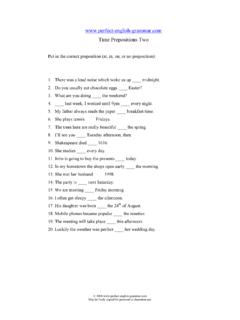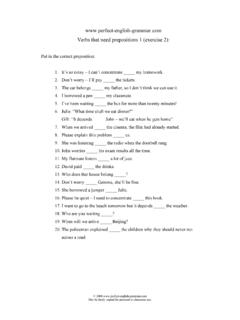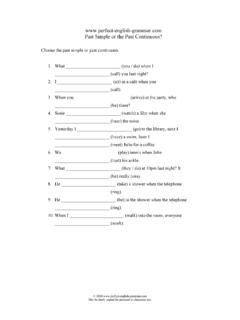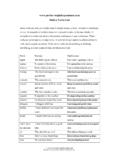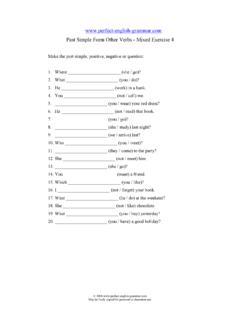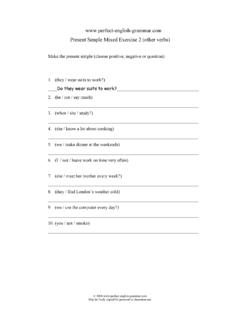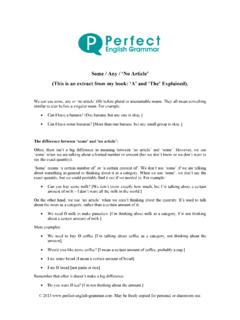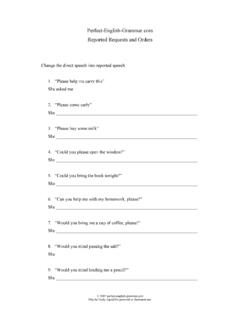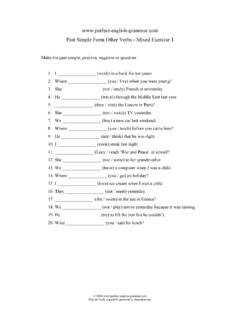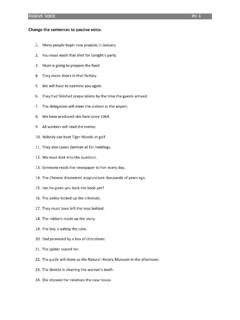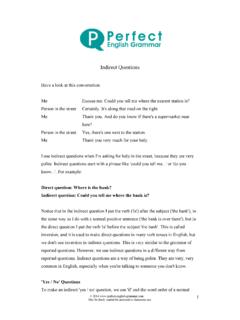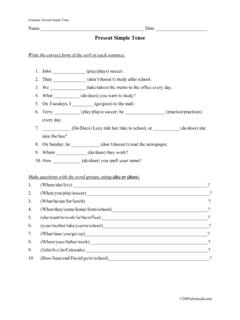Transcription of Participle clauses - Perfect English Grammar
1 2013 May be freely copied for personal or classroom use. Participle clauses : Reduced Relative clauses : We can use Participle clauses after a noun in the same way as relative clauses . This gives more information about the noun. We sometimes call this a reduced relative clause . 1. A present Participle (verb + ing) can be used in the same way as an active relative clause: The man driving the car is a friend of mine. (= The man who is driving the car is a friend of mine). The present Participle can replace any active tense, not just the present continuous tense: Lorries coming over the bridge have to be careful of the wind. (= Lorries that come over the bridge have to be careful of the wind).
2 Who was the girl wearing the red dress? (= Who was the girl who was wearing the red dress?). Students handing in their essays late will lose ten marks. (= Students who hand in their essays late will lose ten marks). 2. A past Participle can be used in the same way as a simple passive relative clause: We read the email sent by the manager. (= We read the email that had been sent by the manager). This vase, made in China in the 14th century, is very valuable. (= This vase, which was made in China in the 14th century, is very valuable). She only eats cakes made by her mother. (= She only eats cakes that are made by her mother). 3. Being + past Participle can be used in the same way as a continuous passive relative clause: The poem being read by the actor was written by my brother.
3 (= The poem that is being read by the actor was written by my brother). The strawberries being eaten at the wedding were grown in Scotland. (= The strawberries that are being eaten at the ). 2013 May be freely copied for personal or classroom use. Things to notice: 1: We generally don t use Perfect participles ( having + past Participle ) in this case: 2: We can t use this kind of Participle clause if we re talking about one finished action which is not repeated: Not: Who was the girl dropping the coffee? Instead, we use a normal relative clause: Who was the girl who dropped the coffee?
